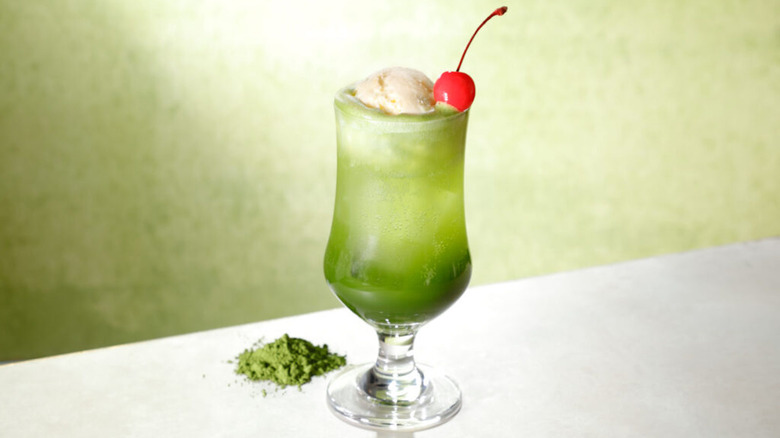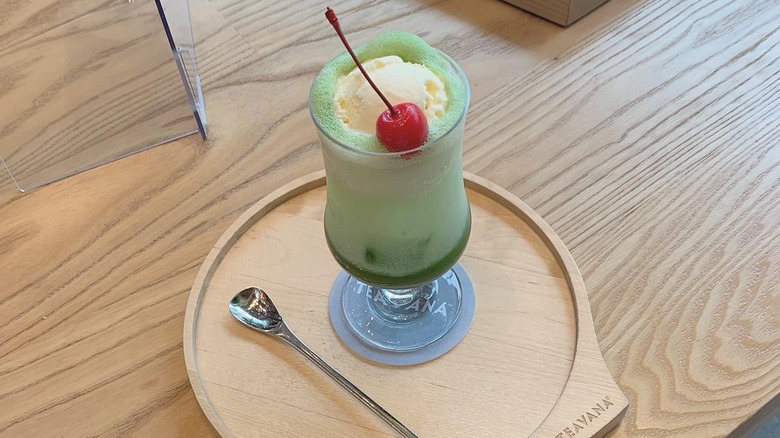The Unique Matcha Cream Soda At Starbucks Reserve Roastery In Tokyo
Ice cream sodas aren't just an American thing. In fact, the Japanese capital city of Tokyo is full of the retro-themed cream soda shops that were popularized there during the '70s. Traditionally paired with fluorescent-colored fruit-flavored sodas, it was only a matter of time before the childhood staple was combined with another emblem of Japanese food culture: matcha — and it's no surprise that the Starbucks Reserve Roastery in Tokyo is the engineer behind it all.
As one of the many international locations, Tokyo's Starbucks Reserve menu features a handful of Instagram-worthy roastery creations — from the Tokyo Pour Over to the Golden-Sky Black Tea Latte. However, this drink takes something as traditional as matcha and pairs it with a beverage as nostalgic as cream soda to create something completely new. It is made with matcha sourced from Uji, a city just south of Kyoto, combined with sparkling water. The drink brings the earthy, umami flavor of the green tea forward and balances it out with vanilla and a scoop of Starbucks Japan original ice cream.
To hold the beverage true to the image of nostalgia that is cream soda, Starbucks' matcha version is topped off with a singular red cherry and served in a classic, oversized glass.
The significance of matcha and cream soda in Japanese culture
Neither matcha nor cream sodas are unbeknownst to American cuisine. Since as early as 2015, trendy matcha cafes have been popping up across the country. From California to New York, you can bet there's a pink-themed cafe to get your fix of the green drink. But compared to the U.S., where to-go matcha lattes are as much an accessory for Instagram influencers as they are a filling beverage, matcha has a much deeper cultural significance in Japan.
Popularized during the 16th century, the methods of preparing matcha for Japanese tea ceremonies are still practiced today. The ritual is performed at weddings, funerals, and other special events — even tourists seek out the experience from the many Japanese tea houses across the country. The same can be said about the many retro-style kissatens and cream soda shops that inspired Starbucks Reserve's adaptation of the drink.

